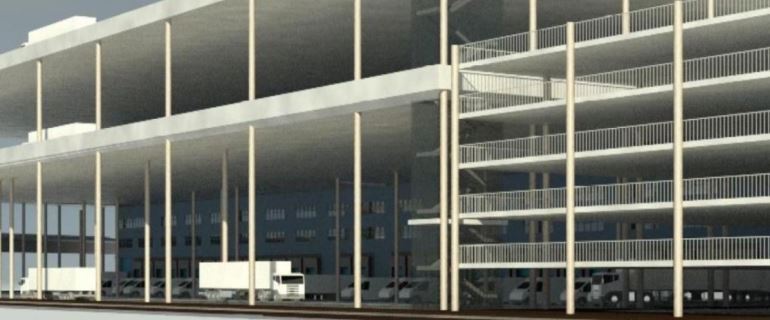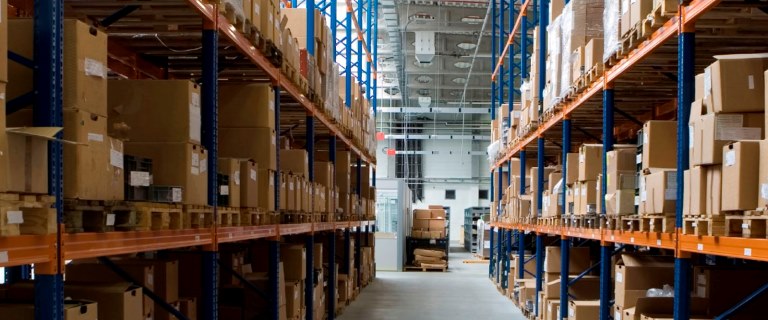Tentative steps to revolutionize the way warehouses are conceived and designed are being made in the United States.
No longer do they need to be gigantic spaces on a single floor. Instead, they could be multistory structures with docks on more than one level.
A handful of such facilities already exist in the U.S. or are in the process of construction. Indeed, according to a new report by Leslie Lanne, senior managing director with JLL, 2023 marks the five-year anniversary of multistory warehouse development in the nation. This new category of buildings even has its own name: “urban logistics.” Amazon’s need for distribution centers is helping drive some of the growth.
“Multistory warehouses have been used in Asia for more than two decades, and a few such structures are also to be found in Europe,” Lanne said. “The most remarkable is a 22-story warehouse in Hong Kong, but most draw the limit at five floors.”
The first and perhaps best-known example in the U.S. is Georgetown Crossroads in Seattle. Developed by Prologis in partnership with Craft Architects, it consists of a three-level, 590,000-square-foot warehouse. There are 62 dock doors on the first level and 38 on the second. The third level contains a makers’ space. The building features truck ramps leading to the second and third floors, served by forklift-accessible freight elevators for lighter-scale warehouse operations, according to Prologis.
“The multi-staged parking levels allow for efficient streamlining of the queuing process of delivery trucks when using fleet vehicles for last-mile delivery operations,” Lanne explained.
Prologis is now in the process of building a far larger project, the San Francisco Gateway, consisting of two 97-foot-tall structures totaling 2.16 million square feet across three floors and a rooftop deck. Each level will be reached by a one-way ramp that can carry tractor-trailers. It will also offer retail and maker space. Prologis says the development will provide much-needed space for production, distribution and repair (PDR) businesses to evolve.
In New York, 2505 Bruckner, a 1-million square foot multi-story warehouse opened in 2022, claims to be the largest, most efficient urban industrial facility in the city. There are now five existing multistory buildings in the New York City boroughs and another five under construction, according to Lanne.
“The projects under construction and in the planned/proposed area of the pipeline total 9.4 million square feet of additional last-mile logistics space in New York City,” Lanne stated.
A 1.2 million-square-foot, two-story warehouse located at 1237 W. Division, in Chicago, is the most recent project to break ground. It is scheduled for completion in 2024.
“While the U.S. multistory and urban logistics landscape is currently very much in its infancy, there is tremendous potential in the future of multistory and urban logistics in both the established urban logistics markets and emerging logistics markets,” Lanne stated.
Established markets include Boston, New York, Philadelphia, Mid-Atlantic, Chicago, San Francisco and Los Angeles. Atlanta, Miami, Dallas, Houston and Seattle are among emerging markets.
For success, proximity to major air and seaport hubs is paramount, as industrial real estate relies on the efficient movement of goods, Lanne noted. Population density is another factor. Efficient site planning and careful layout of the loading docks and parking are vital.
Developers also face other challenges. They include outdated zoning laws, scarcity of available land and financing, and significantly higher construction costs.
“The cost to build a data center typically ranges from $125 per square foot to $200 per square foot, while the cost to build a multistory asset is roughly two times the cost of a single-level asset,” Lanne said.
Source: GlobeSt




